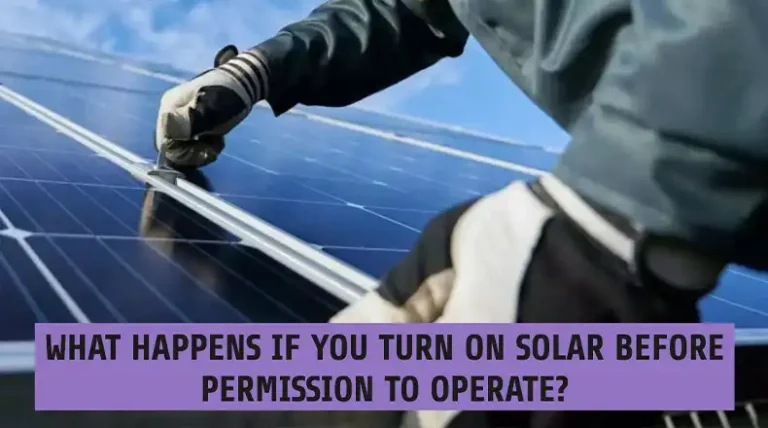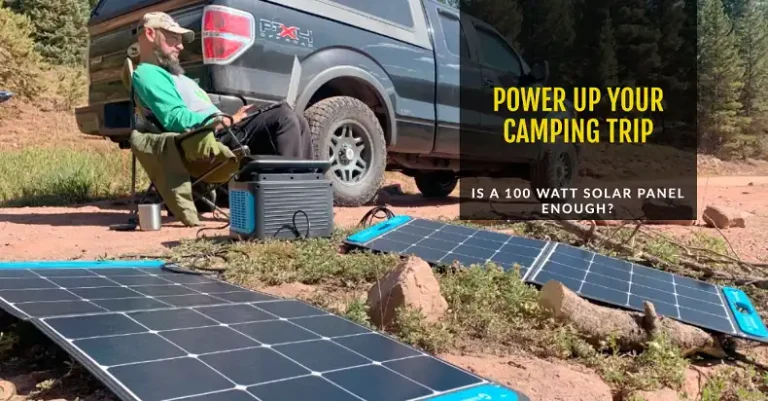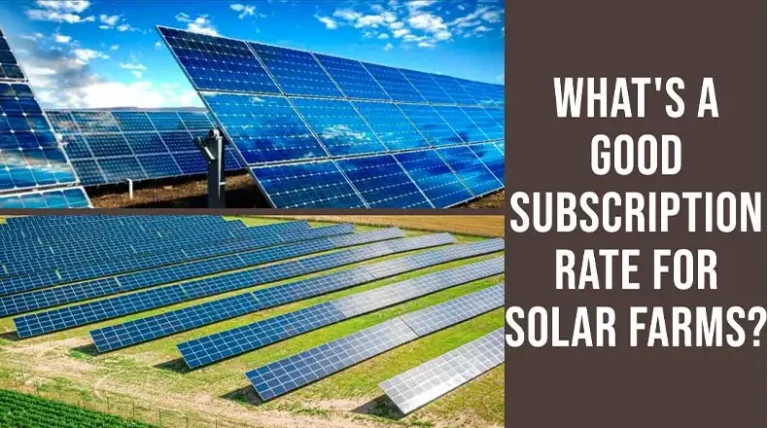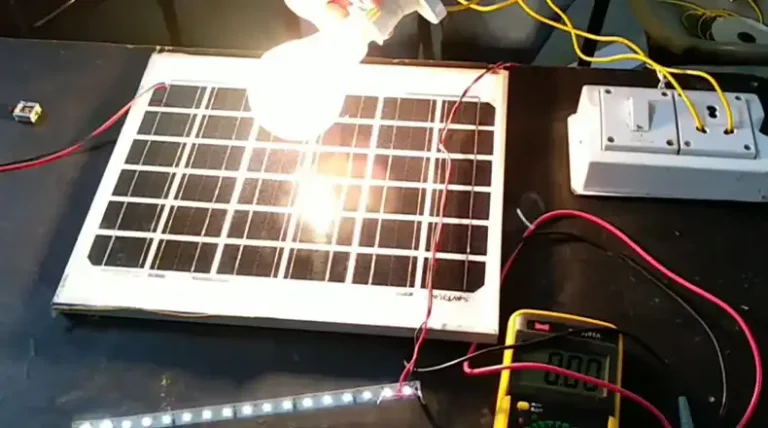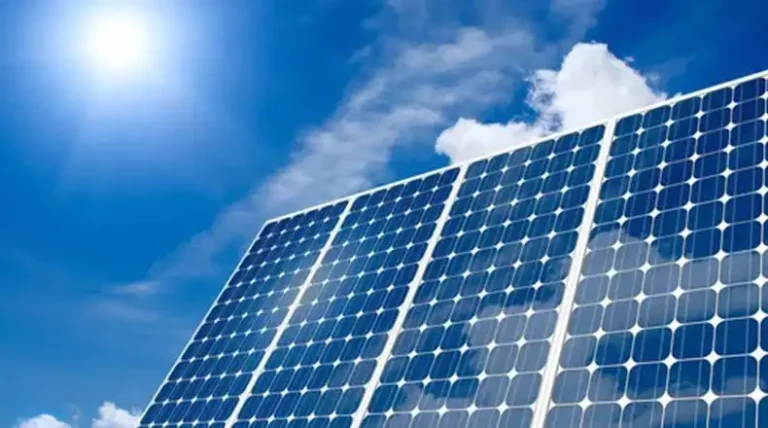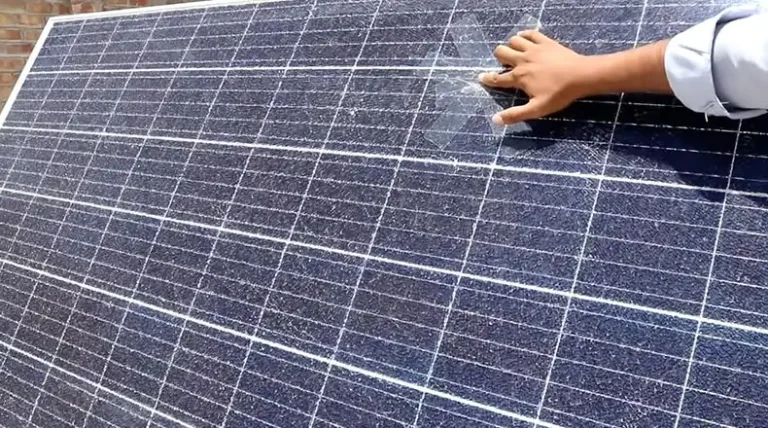How to Protect Solar Panels from Snow and Ice? Explained
Winter can be a challenging time for solar panel owners. As the snow starts to fall and ice begins to form, you might wonder how your solar panels will fare. Will they continue to generate power? Could they get damaged? These are valid concerns, and I’m here to address them.
In this article, we’ll explore various protective measures you can take to ensure your solar panels continue functioning efficiently, even when the weather outside is frightful. From simple adjustments during installation to high-tech solutions, we’ve got you covered. So, let’s shed some light on keeping your solar panels snow and ice-free!
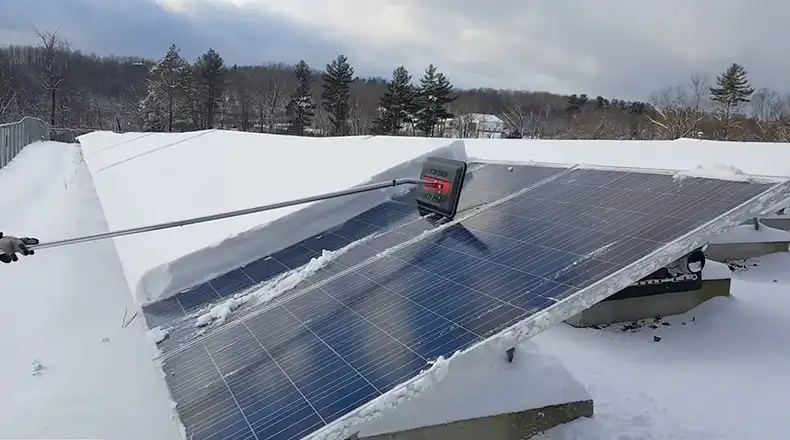
Protective Measures You Can Take to Protect Your Solar Panels from Snow and Ice
When it comes to protecting your solar panels from snow and ice, you’ve got options. Let’s explore some effective strategies that can help keep your panels clear and functioning at their best during the winter months.
Panel Tilt Angle
One of the simplest yet most effective ways to protect your solar panels from snow accumulation is to get the tilt angle right during installation.
During installation, aim for a tilt angle between 45 and 60 degrees. This allows snow to slide off the panels naturally due to gravity. It’s like creating a slippery slope for the snow – it just can’t hang on!
The steeper angle works wonders in winter. When snowflakes land on the tilted surface, they’re less likely to stick around. Instead, they’ll slide right off, keeping your panels clear and ready to soak up whatever sunlight comes their way.
Remember, though, that the ideal angle can vary depending on your location and the specific characteristics of your roof. It’s always best to consult with a professional installer who can calculate the optimal tilt for your situation.
Hydrophobic Coatings
Next up, we’ve got a bit of science on our side with hydrophobic coatings. These are special sprays that create a slippery surface, repelling snow accumulation.
Think of it like waxing your car or skis. The coating makes the surface of your solar panels super smooth, so snow and ice have a hard time sticking. When snow falls on these treated panels, it’s more likely to slide right off instead of building up.
Now, here’s the catch – these coatings might require reapplication throughout the winter. They’re not a one-and-done solution. But for many solar panel owners, the extra effort is worth it for the improved performance.
Applying these coatings is usually pretty straightforward. You can often do it yourself with a spray bottle, following the manufacturer’s instructions. Just make sure to choose a product specifically designed for solar panels – you don’t want to accidentally damage your investment!
Solar Panel Heating Systems
For those of you in areas with very high snowfall, you might want to consider pulling out the big guns – solar panel heating systems.
Installing an automatic heating/cleaning system is the best way to remove snow from solar panels. The system works by using heating elements placed behind the solar panels to melt snow and ice. This process is automatic, meaning that it activates when snow accumulates on the panels. A timer can also be set to trigger the system when specific levels of snowfall are detected.
These systems are like having a built-in snow melter for your panels. They use a small amount of electricity to generate heat, which melts away snow and ice before it can build up. It’s like having a mini snowplow working 24/7 on your roof!
For example, there’s the Thermal Technology Snow melt film for solar panels (code FT-1E ALU). This heating film is made to measure in double layer adhesive aluminum for any model of solar panel. It comes with a modular power supply system with IP68 connectors and has a power of about 175 W/m². In just a few minutes, it can bring the surface of the panel to around 10°C, effectively eliminating snow.
While these systems are super effective, they do come with a higher upfront cost and use some energy to operate. But for areas with heavy snowfall, they can be a game-changer in maintaining consistent solar power production throughout the winter.
Pulley-Operated Tarp System (if applicable)
Now, let’s talk about a more DIY approach – the pulley-operated tarp system. This is a great option if your roof setup allows for it.
If your roof allows it, install a system with a tarp that can be deployed to cover the panels during snowfall and then removed later. It’s like giving your solar panels their own winter coat!
Here’s how it works: You install a pulley system above your solar panels. When snow is in the forecast, you can use the pulleys to draw a tarp over your panels. Once the snow stops falling, you simply retract the tarp, revealing clean, snow-free panels ready to soak up the sun.
This method is particularly useful for those who don’t mind a bit of manual intervention. It’s also a good choice if you’re looking for a more budget-friendly option compared to automated systems.
The main advantage here is that you’re preventing snow from accumulating in the first place, rather than trying to remove it after the fact. Plus, when you remove the tarp, any snow that has fallen will slide right off, leaving your panels clear.
Just remember to choose a tarp material that’s durable enough to withstand winter conditions and won’t damage your panels. And always be cautious when operating the system, especially if you need to climb onto your roof to do so.
Snow Guards
Last but not least, let’s talk about snow guards. These nifty devices can be a real help in managing snow on your solar panels.
Snow guards are mounted on the panels and create space between the snow and the panel surface, aiding in snow shedding. Mesh guards are a good option as they allow sunlight to pass through.
Think of snow guards as little fences for your solar panels. They break up large sheets of snow as they try to slide down your panels, turning them into smaller, more manageable chunks. This helps prevent the “avalanche effect” where all the snow comes crashing down at once, potentially damaging gutters or anything else in its path.
Mesh guards are particularly cool because they don’t completely block sunlight. Even when there’s a bit of snow, some rays can still make it through to your panels, helping maintain some level of power production.
Installing snow guards is usually a job for professionals, as they need to be properly secured to withstand the weight of snow and ice. But once they’re in place, they work passively to help manage snow accumulation all winter long.
Can Snow Damage Solar Panels?
Now, let’s address a common concern: can snow actually damage your solar panels? The short answer is: actually not. But it can reduce efficiency. Let’s dive into the details.
First off, let’s talk about light snowfall. Light snowfall will easily slide off the slick surface of solar panels, especially when installed on a pitched roof. It’s like watching snow slide off a car windshield – the smooth surface just doesn’t give it much to grip onto.
In fact, studies have found that only around 4-6% of annual solar production is lost due to snow accumulation. That’s not too shabby when you consider the potential for heavy snowfall in some areas!
But what about heavy snow loads? Well, you’ll be pleased to know that solar panels are tougher than they look. They’re designed to withstand significant weight from snow. Many models can support over 112 pounds-per-square-inch of force on the frame, equivalent to about 5400 pascals. This prevents damage from heavy snow loads.
To put that in perspective, that’s like having a small car parked on your solar panels! Of course, we don’t recommend testing this out, but it gives you an idea of just how sturdy these panels are.
So while a blanket of snow might temporarily reduce your panels’ efficiency, it’s not likely to cause any lasting damage. The bigger concern is the potential loss of energy production while the panels are covered.
Remember, though, that even on snowy days, your panels might still be working. Snow is translucent, meaning some sunlight can still reach your panels even under a layer of snow. And once that snow starts to melt or slide off, your panels will be back to full production in no time.
In fact, there’s even a potential upside to snow: it can help clean your panels! As snow slides off, it can take dust and debris with it, leaving your panels cleaner and more efficient when the sun comes out again.
Wrapping Up
By implementing these protective measures, you can significantly reduce snow and ice buildup on your solar panels, ensuring optimal performance throughout winter. Remember, a little planning and the right tools can go a long way in keeping your solar investment generating clean energy year-round.

